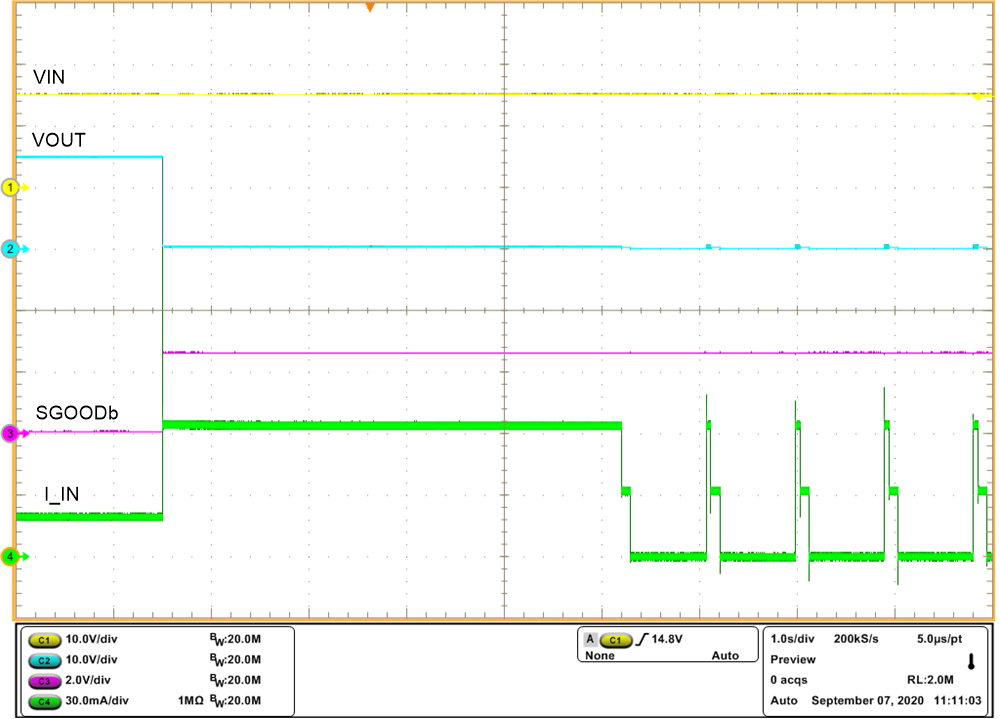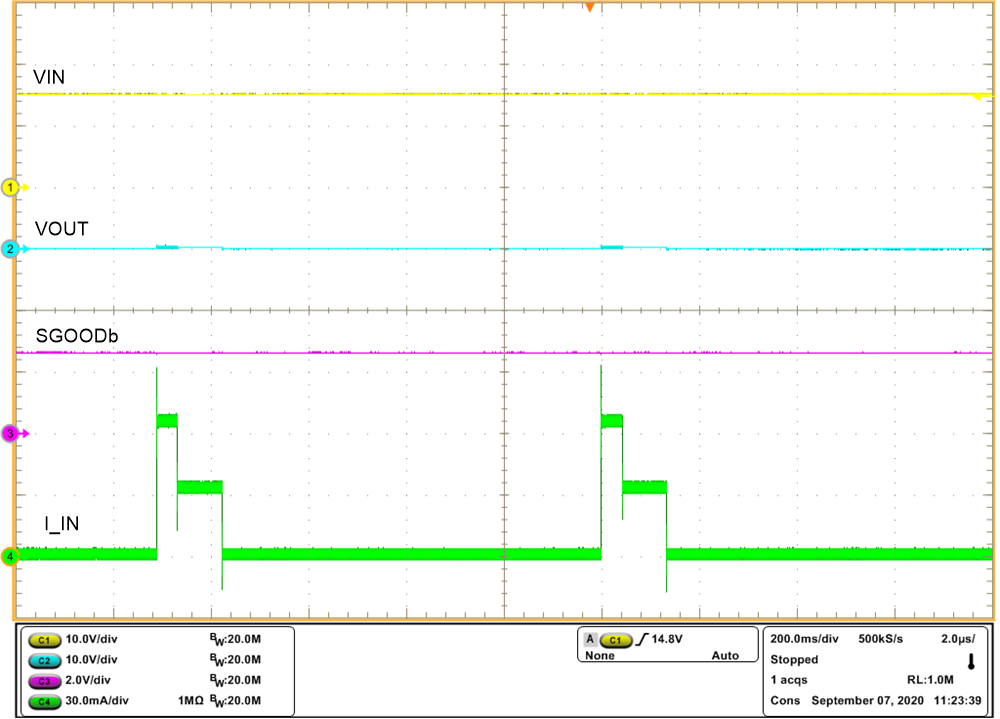SLVUBX8B October 2020 – December 2021 TPS2661
- Trademarks
- 1Introduction
- 2Description
- 3Schematic
- 4General Configurations
-
5Test Setup and Procedures
- 5.1 Overload Protection Test
- 5.2 Output Short-Circuit Test
- 5.3 Input Undervoltage Protection Test
- 5.4 Output Undervoltage Protection Test
- 5.5 Output Overvoltage Protection Test
- 5.6 TPS26612 Overload Protection Test
- 5.7 Current Limiting for VIN < –Vs
- 5.8 Surge Protection Test (Current Input, CH1)
- 5.9 Surge Protection Test (Analog Output, CH2)
- 6EVAL Board Assembly Drawings and Layout Guidelines
- 7Bill Of Materials (BoM)
- 8Revision History
5.6 TPS26612 Overload Protection Test
Use the following instructions to evaluate current limit behavior of TPS26612 (U3):
- Set the jumper setting J10 in 1–2 position to set MODE = OPEN
Connect a load resistance of 1 kΩ between I_OUT_2 and AGND_2 at connector J9
- Adjust potentiometer R12 to set 6V at I_IN_2 (J13/ TP16). This action results in a voltage of 15 V at the input of TPS26612 eFuse (U3)
- Now apply load of 5 Ω between I_OUT_2 and AGND_2 to trigger overload fault
Observe the waveforms using an oscilloscope
Figure 5-10 and Figure 5-11 show current limit behavior of TPS26612 captured on the TPS2661EVM eFuse evaluation board.
 Figure 5-10 Current-Limit Behavior of
TPS26612
Figure 5-10 Current-Limit Behavior of
TPS26612 Figure 5-11 Current-Limit Behavior of
TPS26612 Under Sustained Overload
Figure 5-11 Current-Limit Behavior of
TPS26612 Under Sustained Overload